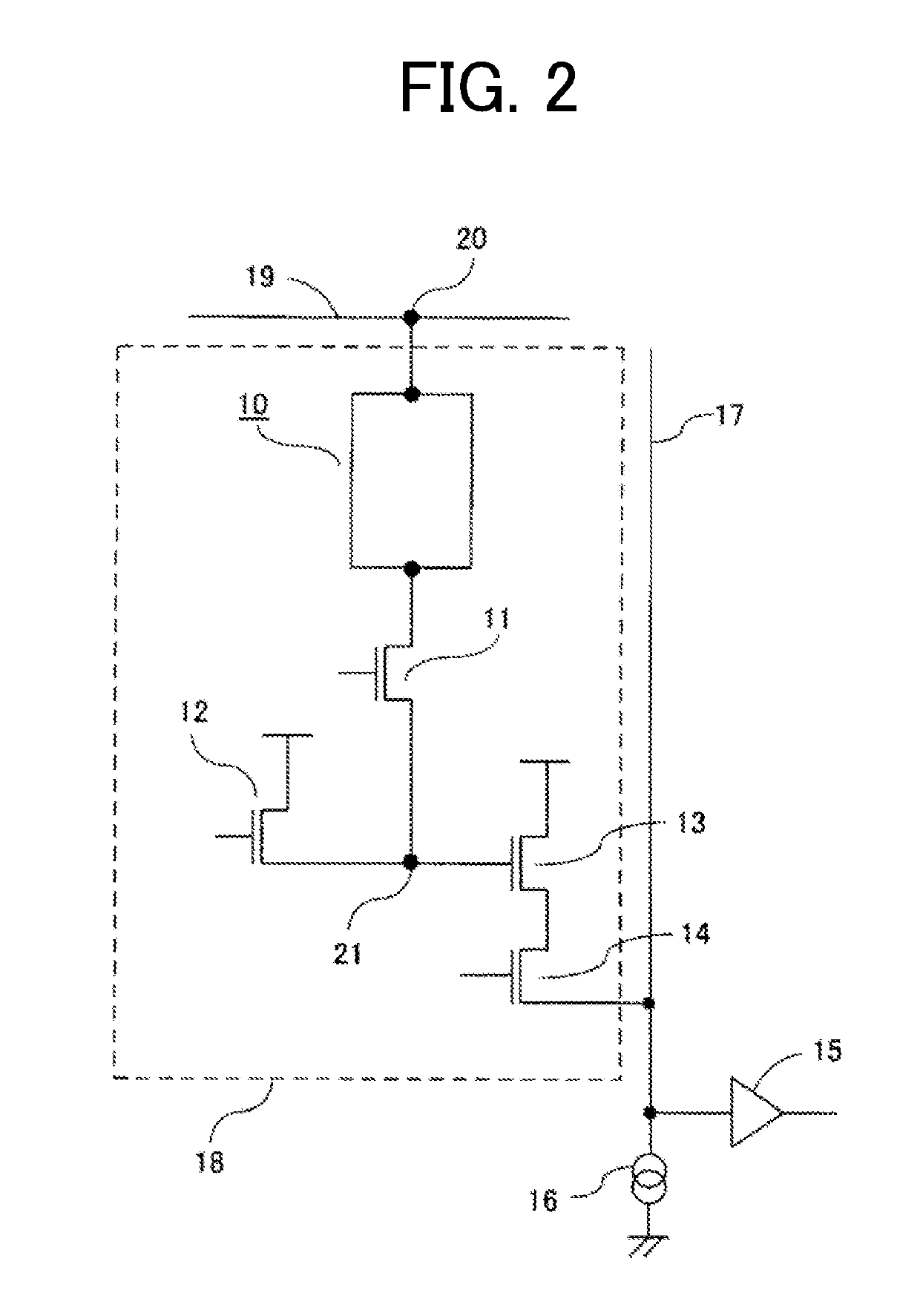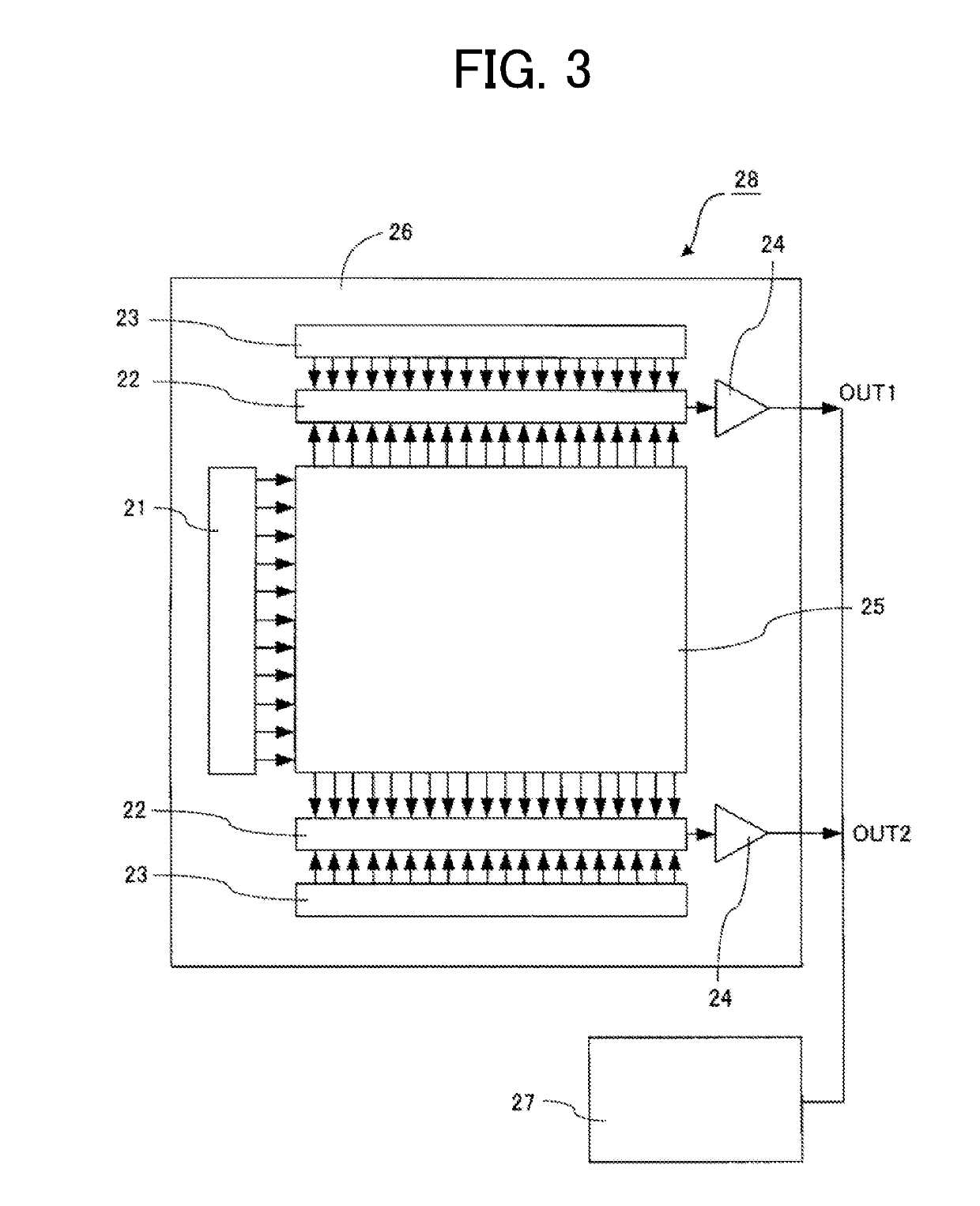Organic compound and photoelectric conversion element
a technology of organic compounds and conversion elements, applied in the field of organic compounds and photoelectric conversion elements, can solve the problems of partial absorption of incident light and the decline in the efficiency of photoelectric conversion, and achieve the effect of excellent thermal stability and no absorption
- Summary
- Abstract
- Description
- Claims
- Application Information
AI Technical Summary
Benefits of technology
Problems solved by technology
Method used
Image
Examples
example
[Example 1] (Synthesis of Exemplary Compound A1)
[0134]Exemplary Compound A1 was synthesized according to a synthesis scheme which was shown below.
[0135]Into 100 mL of a three-necked flask which was controlled to a nitrogen atmosphere, the following reagents and solvents were sequentially charged, and the solution was stirred at room temperature for 30 minutes.
[0136]Pd2(dba)3: 0.16 g (0.17 mmol)
[0137]x-phos: 0.25 g (0.52 mmol)
[0138]Xylene: 35 mL
[0139]Next, the reagents and solvents which were shown below were sequentially charged.
[0140]M1: 2.07 g (7.69 mmol)
[0141]M2: 1.00 g (3.50 mmol)
[0142]Sodium tertiary butoxide: 1.11 g (11.54 mmol)
[0143]The reaction solution was heated to 130° C., and was stirred for 7 hours in a state of having been kept at 130° C. Next, the reaction solution was allowed to cool down to room temperature, and then a residue obtained by filtration was washed with water and methanol. After that, the resultant was concentrated under reduced pressure, and thereby a c...
example 2
[Example 2] (Synthesis of Exemplary Compound A4)
[0148]Exemplary Compound A4 was obtained by a synthesis which was performed by a similar method to that in Example 1, except that the following compound M3 was used in place of the compound M1.
[0149]The obtained compound was identified. The results are shown below.
[0150]
[0151]Actual measured value: m / z=887, and calculated value: C66H66N2=887
example 3
[Example 3] (Synthesis of Exemplary Compound A10)
[0152]Exemplary Compound A10 was obtained by a synthesis which was performed by a similar method to that in Example 1, except that a compound M3 was used in place of the compound M1, and the following compound M4 was used in place of the compound M2.
[0153]The obtained compound was identified. The results are shown below.
[0154]
[0155]Actual measured value: m / z=937, and calculated value: C70H68N2=937
PUM
| Property | Measurement | Unit |
|---|---|---|
| glass transition temperature | aaaaa | aaaaa |
| voltage | aaaaa | aaaaa |
| voltage | aaaaa | aaaaa |
Abstract
Description
Claims
Application Information
 Login to View More
Login to View More - R&D
- Intellectual Property
- Life Sciences
- Materials
- Tech Scout
- Unparalleled Data Quality
- Higher Quality Content
- 60% Fewer Hallucinations
Browse by: Latest US Patents, China's latest patents, Technical Efficacy Thesaurus, Application Domain, Technology Topic, Popular Technical Reports.
© 2025 PatSnap. All rights reserved.Legal|Privacy policy|Modern Slavery Act Transparency Statement|Sitemap|About US| Contact US: help@patsnap.com



